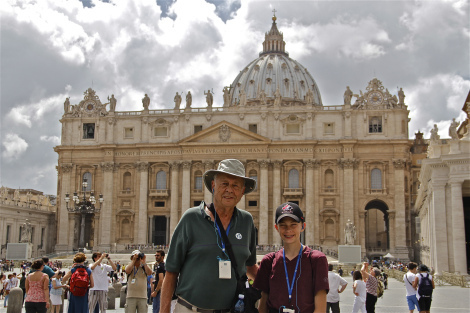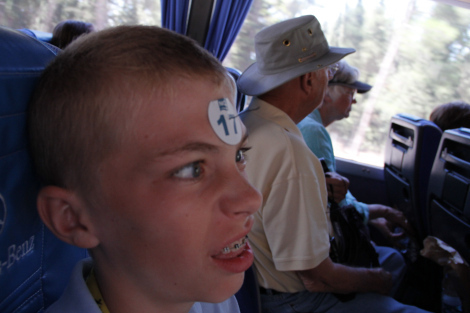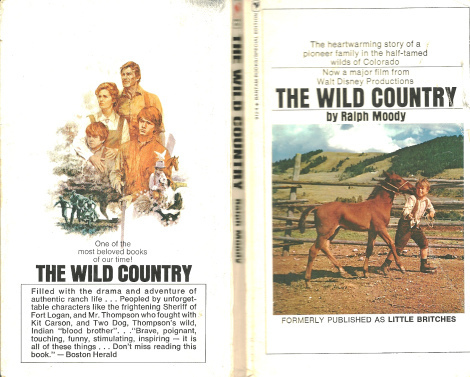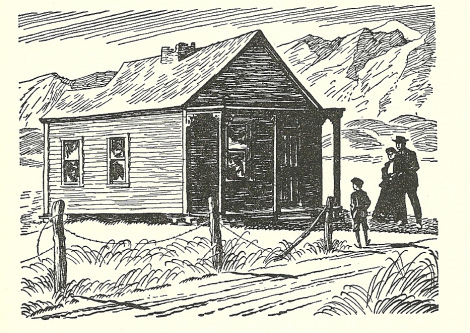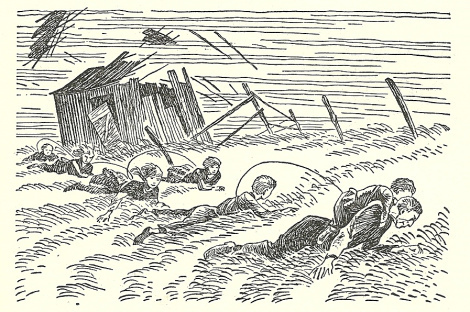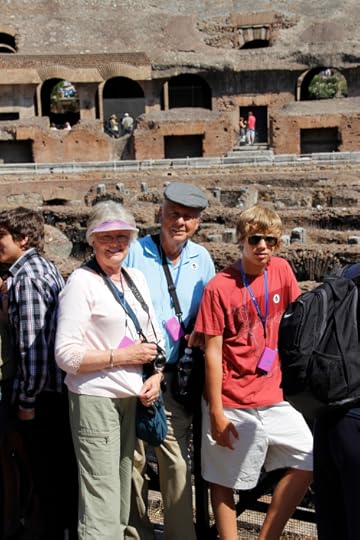Joe L. Wheeler's Blog, page 6
November 26, 2014
Kate Douglas Wiggin’s “The Birds’ Christmas Carol”
BLOG #48, SERIES #5
DR. JOE’S BOOK OF THE MONTH CLUB #36
KATE DOUGLAS WIGGIN’S THE BIRDS’ CHRISTMAS CAROL
November 26, 2014
Each of you—even those I’ve never had the privilege of hearing from—who honor me by being a member of Dr. Joe’s Book of the Month Club, will no doubt remember that every Christmas I’ve turned back the pages of time to a Christmas book that has warmed my heart down through the years. For our first Christmas (Nov. 23, 2011), we shared two books: Dickens’ Christmas Carol and Abbie Farwell Brown’s The Christmas Angel –Dickens with his inimitable male Scrooge and Brown with her equally memorable female Scrooge.
A year later (Nov. 28, 2012), we shared Lloyd C. Douglas’s moving Home for Christmas. Then last year (Dec. 4, 2013), we journeyed through the ancient East with Henry Van Dyke’s unforgettable Artaban (The Other Wise Man).
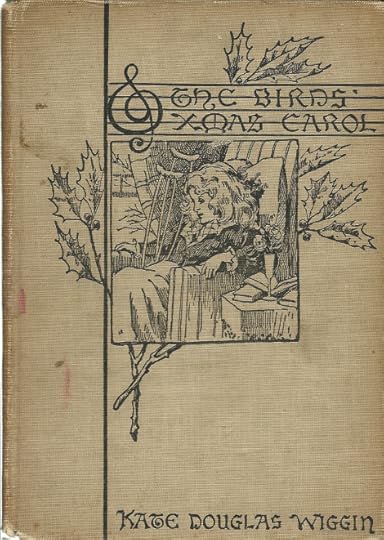
(1888 First Edition)
Now, for our fourth Christmas together, I am finally caving in to all the importuning readers over the last 23 years who have repeatedly urged me to include Kate Douglas Wiggin’s beloved little book, The Birds’ Christmas Carol (Boston: Houghton Mifflin Company, 1888) in the Christmas in My Heart® series. I never have, because it is too long, but I can make it our 2014 Christmas book of the year.
St. Luke, of course, told us the greatest Christmas story of all. However, it was left to Charles Dickens, in 1843, to gift the world with the first fictional Christmas book: A Christmas Carol.
Twenty-five years later, Louisa May Alcott brought the four Alcott sisters to life at Christmas time, in Little Women (1868-9). Beth has to be one of the most sentimental and most beloved heroines in all family literature. Just as was true in real life, Beth dies way too young. In my American Literature class discussions, even the macho males who initially groused about having to read “a girls’ book”, after reading it admitted to their classmates that they too had wept over Beth.
Twenty years later (1888) Kate Douglas Wiggin built upon Dickens’ Christmas Carol and Alcott’s depiction of Beth to gift her audience with a Beth-like character of her own—Carol Bird.
The author, Kate Douglas Wiggin (1856-1923) was born in Philadelphia, then the family moved to Hollis, MN. She was homeschooled, then studied at various seminaries and academies. When 17, she joined her family in California; after teaching in Santa Barbara, she moved to San Francisco where she established the first free kindergarten on the West Coast. Her first husband, Samuel B. Wiggin, died young; she later married George C. Riggs. She died in England.

(1929 Popular Edition)
Among her books are The Story of Patsy (1883), The Birds’ Christmas Carol (1888), Timothy’s Quest (1890), The Story Hour (with Nora A. Smith, 1890), Polly Oliver’s Problem (1893), A Cathedral Courtship (1893), Penelope’s Progress (1898), The Story of Waitstill Baxter (1913), Ladies in Waiting (1918), her autobiography, My Garden of Memories (1923), and a number of others. But her reputation rests on two books: The Birds’ Christmas Carol and Rebecca of Sunnybrook Farm. Both were bestsellers, but Rebecca swept the nation, no small thanks to two movies: the first (1917) was a silent film with an organ score – Francis Marion wrote a splendid screenplay for it, and kept it faithful to the book. The film was directed by Marshal Neilan and starred Mary Pickford, Eugene O’Brien, Josephine Crowell, Helen Jerome Eddy, Charles Ogle, Marjorie Daw, ZaSu Pitts, and Mayme Kelso. According to Derek Elley, “Mary Pickford plays as she never played before, varying lights and shades to elicit the major interest, tearful at one moment and laughing the next. Her support is flawless, embodying many artists of repute.” The second film (1938) all but abandons the original novel in favor of a bouncy musical. It was directed by Allen Dwan, produced by Raymond Griffith, photoplay by Arthur Miller. It had a star-studded cast: Shirley Temple, Randolph Scott, Jack Haley, Gloria Stuart, Helen Westly, Bill Robinson, Phyllis Brooks, Slim Summerville, and William Demarest. As would be expected, Shirley Temple steals the show. The plot: a talented stage child who wins a broadcasting moppet contest.
The Birds’ Christmas Carol was never filmed; nevertheless it benefitted mightily from the two Rebecca of Sunnybrook Farms films’ publicity and hype.
You may well ask. Why all the sentimentality in The Birds’ Christmas Carol? Why all the fuss about a girl dying young?
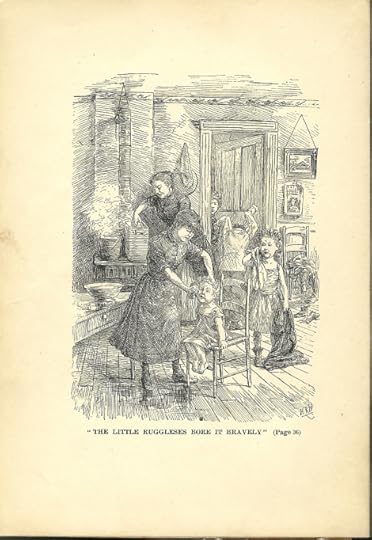
Frontispiece – 1888 Edition
Here’s why: Up until the early 20th century, half of all children died during their childhood or teen years. Since medicine was still in its infancy, sanitation wasn’t even thought of, antibiotics didn’t exist, nostrums were taken seriously, doctors were poorly trained, and hospitals were little used—people tended to be born at home, and die at home. As a result, parents were terrified by any childhood ailment, no matter how minor it might seem. Reason being: there were back then no reliable cures for anything. Most any infliction could end your life. And most women died from childbirth complications because neither doctors nor midwives washed their hands between patients.
Case in point: How well I remember my paternal grandfather, Rollo Wheeler, who though he and Grandma Ruby had eleven children, two of them—little Eva and little Arthur—died young and in his arms at home. So just mention either to him, and he’d weep.
Plus, the 1880s was a most sentimental decade. The traditional family was strong, God and country were celebrated, Father earned the living, and Mother was the almost deified madonna of the home. Children were protected from adult realities and taboos (unlike today). So since death was such an unfathomable mystery, the gradual departure of a young life was both celebrated and sentimentalized.
Offsetting the trauma of Carol’s long decline, Wiggin wisely offset it by the rollicking comic relief represented by the large Ruggles family next door.
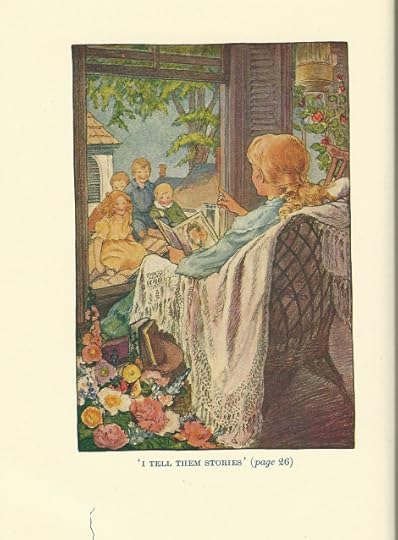
Frontispiece: 1929 Edition
* * * * *
So, with all this as a preamble, search out an early text. But try to get the Houghton Mifflin original text with original illustrations by H.R.H. But the so-called “Popular Edition” (1929), with color and b/w illustrations by Helen Mason Grose is equally attractive. If at all possible, don’t settle for anything but top condition in this heirloom book. When you read it, block out 21st century realities from your mind and pretend you are a turn-of-the-century reader.
Will be most interested in your reactions.

November 19, 2014
Greed Attacks Thanksgiving
BLOG #47, SERIES #5
WEDNESDAYS WITH DR. JOE
GREED ATTACKS THANKSGIVING
November 19, 2014
In case you haven’t noticed, the forces of Greed and Secularism appear determined to obliterate all remnants of the spiritual dimensions of America’s holidays: they’ve been all too successful with Easter, and even more successful with Halloween. For several generations now they’ve been attacking Christmas from every possible direction.
Now, they appear determined to bulldoze Thanksgiving (morphing Thanksgiving into Black Thursday) off the calendar. Abraham Lincoln founded Thanksgiving as a profoundly spiritual day. It remained so for over a hundred years. But not so today.
If you haven’t read it yet, I strongly urge you to track down Drew Harwell’s Nov. 17 Washington Post article, “Thanksgiving Day Shopping: Retailers vs. Black Thursday.”
Harwell quotes Peter Foley of Bloomberg News: “Shoppers rush through the doors at a Macy’s store in New York on Thanksgiving. Not long ago, the practice of a store staying closed on the holiday was simply a given, but now a core of retailers is pushing back, vowing to stay closed.”
Harwell’s lead paragraph is in the same vein: “Not so long ago, the practice of a store staying closed on Thanksgiving was simply a given; one more holiday in which workers assumed they’d get some time off. Then, amid the corporate tug-of-war over Black Friday crowds, retailers began eying the juicy hours of Turkey Day as the best time to kick off their crucial holiday shopping seasons. The move drew both sales and backlash from shoppers, who worried the sacred day was being plowed beneath the tough work schedules of Black Friday creep.”
What far too few of us appear to realize is this: every time Christians cave in to secular forces determined to destroy all Christian institutions and holidays, they simultaneously erode the remaining few opportunities families have of maintaining ties with each other. Requiring workers to work on religious days and holidays results in the attendant dismantling of the family structure and Judeo-Christian values.
Result: this year, 45% of Americans plan to shop on Thanksgiving, up from 38% last Thanksgiving.
Walmart, the nation’s biggest private employer, plans to be open all day. J.C. Penney, Best Buy, and Toys R Us will munificently wait until 5:00 p.m.; Kohl’s, Macy’s Sears, and Target, tiptoe in an hour later.
But we all know what that means: their employees will be forced to leave the Thanksgiving dinner table early, or miss it entirely, in order to get to the store in time to get ready for the crowds. Some of the stores will stay open all night and marathon into Black Friday.
A big question well worth serious thought is this: Every time Christians or strong believers in family values and togetherness votes with their feet by shopping on Thanksgiving, they are betraying their own core values.
Not all is lost, however. Harwell notes that “The stores refusing to open on the holiday, however, may feel the moral capital they gain from looking like the good guys could mean more for their brand in the long run. A study last month by retail site RichRelevance found more than 60% of Americans said they disliked that stories opened on Thanksgiving, and only 12% said they liked the trend. The movement is gaining steam: A ‘Boycott Black Thursday’ Facebook page has more than 79,000 likes.
It is indeed time for each of us to stand up and be counted on this issue. Next time you shop in stores that remain closed on Thanksgiving, take the time to speak to the managers personally and thank them. Do more: in gratitude for their stand—patronize them. Among those who this year put families and those who work them first, valuing them more than profits, are the likes of American Girl, Barnes & Noble, Bed Bath & Beyond, BJ’s Wholesale Club, Burlington Coat Factory, Costco [Costco is renowned for putting its employees first], Crate and Barrel, Dillard’s, DSW, GameStop, Hobby Lobby, HomeGoods, Home Depot, Jo Ann Fabrics, Lowe’s, Mardel’s, Marshall’s, Nordstrom, Patagonia, Petco, Pier 1, Publix, and REI.
What a statement it would make to all these purveyors of greed if Americans would unitedly rise in support of the “Good Guys,” and put teeth in this act by boycotting the “Bad Guys!”
Well, might it be possible….if we all get angry at once and say, Enough is Enough!


November 12, 2014
THE GIRL WITH DANCING EYES
BLOG #46, SERIES #5
WEDNESDAYS WITH DR. JOE
THE GIRL WITH DANCING EYES
November 12, 2014
She would not have been unusual during my growing-up-years—but she is now. She was reading the Scripture text at church: clearly, each word perfectly enunciated, with deep feeling. And her eyes—they lit up the entire church. I literally could not take my eyes off of her.
After church, I spoke with her. I learned quite a bit about her upbringing, but learned little I had not already surmised. I complimented her on the sense of wonder radiating from her eyes—but really it was the parents who deserved the fuller credit for them. For it was they who have so far protected her from losing that God-given sense of wonder all babies are born with, but oh so few retain more than months.
So why, if her eyes are wonder-filled, do I label her “The Girl with Dancing Eyes”? This is why: When she was in church, her eyes were wonder-filled reverent eyes; but, one-on-one, outside of church—I was not a stranger to her (her family reads from my books)—, though the wonder remained in her eyes, there was a joyousness, tied to an entrancing addition of impishness, that was absolutely irresistible: the only word that adequately capsulizes the totality is “Dancing.”
But why is she not the norm among children her age? Reason being that many forces are at work that contribute to stripping that sense of wonder from the eyes of babies and children. Parents do it the very first time they permit the baby to be in the room when the television set is on. Studies have shown that babies are anything but unaware, picking up 60-70 percent of what is said and depicted on the screen. Parents all too often fail to realize how little it takes to quench that spark of vibrant life that brings the glow into the eyes. Parents—and how few parents are not guilty of this!—apparently don’t realize what they are doing when they say, “For goodness sake, stop bothering me with your questions—go watch TV!”
And precious little that appears on the television screen elevates the soul of those who watch it. And even if a program is values-worth-living-by-affirming, all too few of the million-plus commercials each of our children is exposed to during their growing-up years, are likely to increase the candle-power of those pure eyes they were born with.
But parents cannot take that sense of wonder for granted. It must be continually reinforced in the family story hour. For children do not internalize abstractions, but rather they internalize whatever values (uplifting or debasing) they hear or see in stories. Since few of the stories they experience on the media are compatible with the sense of wonder they were born with, wise parents realize that it doesn’t take more than seconds or minutes to blight—or even destroy completely—that glow. But if they are introduced to the right kind of stories (the ones they’ll ask for again and again), they will internalize those values. This is the reason Christ never spoke without stories: He created us to internalize them; to grow into them.
One danger, however, must be pointed out: It is all too easy for concerned parents to over-react. To be so over-protective and restrictive that their children either rebel or grow up to be narrow-minded, naive, and incapable of dealing with the complexities of adult life.
It is an awesome responsibility to raise a child.


November 5, 2014
Making Memories with Grandparents – Part 4 – Seth’s 2014 Cruise
BLOG #45, SERIES #5
WEDNESDAYS WITH DR. JOE
MAKING MEMORIES WITH GRANDCHILDREN
PART FOUR
SETH’S 2014 CRUISE
November 5, 2014
For two years after Taylor’s cruise, the big question was, “Is Seth even interested in mastering the geography of the world?” After all, he’d seen how much work it took for his mother and Taylor to successfully complete such a learning marathon. Furthermore, given that Seth is such an “I’m-the-boss-of-me” individualist, just because
Cezanne’s home in Aix en Provence
 his brother did it would not by itself mean much if Seth himself wasn’t equally interested in such a challenge. And, just as was true with Taylor, not until his twelfth birthday did he give the green light to his mother.
his brother did it would not by itself mean much if Seth himself wasn’t equally interested in such a challenge. And, just as was true with Taylor, not until his twelfth birthday did he give the green light to his mother.
Turns out the pace was similar. Not until we were within days of his thirteenth birthday did he clear his last hurdle. When Seth was asked what he’d most like to travel to, he was succinct: “Islands and deep blue sea!” And just as was true with Taylor, his summer sports program was so demanding that we only had a three-to-four-week window to work with; consequently, that reduced our cruise options to a rather small number. We didn’t want to book a cruise that was a carbon copy of Taylor’s because we wanted Seth to feel that there were aspects of the itinerary that were his alone.
In the end, we booked early, in order to get an advance rate, with a cancellation clause that permitted us to back out if Seth failed to complete his challenge in tine. We found a cruise on the Norwegian Spirit that played all the destination hits (from one end of the Mediterranean clear to the other).
Here is the itinerary:
July 3, 2014 – Arrive in Barcelona
July 5 – Leave Barcelona
July 6 – Toulon, Aix en Provence in France
July 7 – Liverno, Florence and Pisa
July 8 – Citavecchia, and Rome
July 9 – Naples, and the Isle of Capri
July 10 – At Sea
July 11 – Mykonos, Greece
July 12 – Istanbul, Turkey
July 13 – Ephesus
July 14 – Athens, Cape Sounion Temple of Poseidon
July 15 – At Sea
July 16 – Venice
July 17 – Return to Philadelphia
As we tested Seth, it didn’t take me long to discover that he was especially susceptible to side-trips beyond the required. In that, he reminded me of my own Grandpa Herbert Leininger, who’d always suffered from an incurable itch to find out what was on the other side of a given hill.
He even expressed his own individuality in his written response to being sent a journal with the trip’s itinerary pasted in at the front of it, and symnopses of each day-trip we had booked.
He wrote,
“Dear Grammy and Poppy,
Thank you for dedicating the last 13 years to save up to take me on a journey of a lifetime. I can’t wait until then. We will have a great time. I wonder what the hotel room on the ship will look like. There are so many things I wonder what will be like. Can’t wait to see you guys.
Love, Seth”
This time, Greg didn’t even try to surprise the new traveler. Of course, he wanted to go along. But no more cramming four people into one small stateroom; he booked an adjoining room for him, and we had Seth bunk with him. Both times, it was great to have Greg along. Of course, the whole purpose of both cruises was the opportunity, at least once in each grandson’s lifetime, to be able to give them our undivided attention. But even so, given that Greg was only one generation removed rather than two (our case), it gave both boys two generational options rather than just grandparent/grandchild.
This time, we made the transatlantic flight without Greg, as he was flying straight to Munich in order to pick up a brand new BMW there. He later met us at the ship early afternoon of the sailing day.
It didn’t take us long to discover that Seth had three obsessions: science, art, and sports. Words too: from someplace he inherited a love for words—individualized, like Ogden Nash, in his case. Rarely a day in which he failed to coin a new word.
At Barcelona, we were lucky enough to get an early check-in, so after our long transatlantic flight we were able to crash for four hours before venturing out on Las Ramblas. Seth was particularly fascinated with the mime who was impersonating Salvador Dali, complete with long twirly mustache. That evening we played a domino game our family calls either “O’Henry” or “Ah Shucks.”
When we got to Gaudi’s Sagrada Familia, next day, after ten hours sleep, we had to wait in long long lines over an hour and a half just to get tickets—and then two more hours waiting to get in. It was truly amazing to see how much progress had been made in only three years. Of course, 25,000,000 people a year, each paying a hefty admission price, ought to result in progress!
Later on, I was traumatized to discover that somewhere along the way I’d dropped three sets of very expensive bus tickets. We completed the day’s activity by a visit to the great Palace of Art on the hill. Seth was especially fascinated by the Gothic and Romanesque art.
Next day, finally got into the magnificent Palace of Catalonian Music — hadn’t even been able to get in three years before.
Then, check-out, meeting Greg at the ship, and we were on our way late in the afternoon. No storms this time.
Two days later, in Florence, we lucked out with a much more effective and articulate guide than the one Taylor had lampooned three years before. I’ve discovered over the years that great guides can make a trip and poor guides wreck them.
In Rome, we braved long lines in order to get Seth into Michelangelo’s magnificent St. Peter’s Cathedral.
Next day, high up on the legendary Isle of Capri—first time ever for Connie and me—, by agreement, we separated into two groups of two. Almost disaster! Connie and Seth waited at the Clock Tower rather than the bus stop, so after waiting a time, the other bus passengers left for the fast ship back to Naples. The guide stayed with Greg and me. Finally, Greg was able to get through to Connie’s almost dead cell phone, and the guide put us on a separate bus. We just made the last ship back!
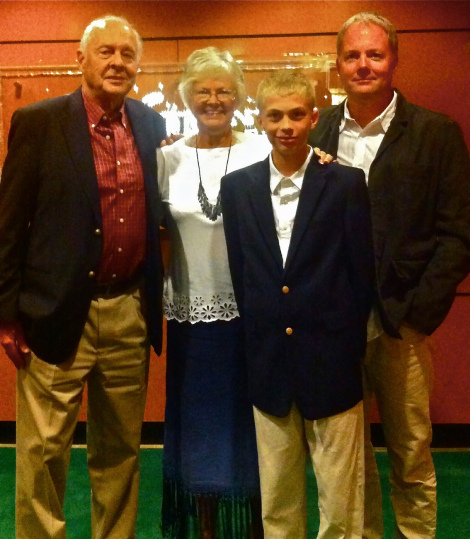 Our Formal attire for dinner one night!
Our Formal attire for dinner one night!
Seth’s journal commentary was uniquely Seth-ish:
July 3 – “When we went through security [Philadelphia Airport] Grammy got searched because her bling-pants set off the beep.”
July 7 – Florence and Pisa – “Today was fun. It was tiring though. It took a little more than 10 hours. This was Florence too and not just Pisa. We saw 2 cities! I also got some cool pics of me and leaning tower. We had the BEST GUIDE EVER! She could actually speak English we could understand.”
July 8 – Rome -“Today we had a ninja tour guide, she kept walking away, expecting all of us to follow, leaving about 10 people behind each time…. We only had 10 minutes in the Colosseum. It shtank!”
July 9 – “Capri – O.M.G. Island with clear water. I took a chairlift to the top of the island. I’m still trying to take in the awesome view. It was so majestic.
July 11 – Mykonos – “Clear water! Yah! I went to Greece! The water was as clear as this circle. [He drew a circle]. It was pretty warm too. I stuck my foot in the water… Or accident, with my shoe on. The greek houses were sicik [sic] too, all white and blue highlights.”
July 12 – Istanbul – “Yah, another cool guide. I got 1 spinnything [a top] and we got 4 scarves for Mom and Grammy… Sheese! There was also a cool welcoming band. We went into a mosque where we had to not wear shoes and Grammy had to wear a thing on her head.”
July 13 – Ephesus – “YESSSS! [pronounced with an h sound at the end]. I slept in. Today was okay but we had the best food than the other excursions. Uncle Greg and I got lost/separated from our group, but we eventually found the group again.”
No journal entry for Athens and Venice. A pity. But Seth compensated for it on the last day of the cruise (almost every day he coins a new word): SHMECKLE – for thingees, words, or terms you can’t think of , or any word you want to substitute for.
I had earlier suggested to Seth that he’d be protective of his Grammy as there are so many pickpockets in the crowded streets. He took me at my word, and almost invariably he’d be protecting one side of her, and expecting Greg or me to cover the other. For crowd-control purposes, each bus-load of people is given in advance stickers designating which bus to board for a designated tour. Seth delighted in later planting those stickers somewhere where we wouldn’t notice them – often on our back-sides somewhere.
All too soon, we had to bid adieu to the Norwegian Spirit in Venice; Greg flew back to Munich to pick up his BMW for a few days before having it shipped home to him, and we boarded the plane for Philadelphia.
When I asked Seth to rank his experiences, this is how he did it:
1. View from the Isle of Capri [just as Taylor fell in love with the nearby Amalfi Coast, Seth will most likely never ever forget the sight of the incredibly deep blue sea as seen from the ramparts of Capri].
2. Sagrada Familia [like Taylor before him, he was overwhelmed by the interplay of light inside—it literally takes one’s breath away].
3. Free Soft-Serve Ice Cream! [Seth gave Taylor a run for his money in his multitudinous raids on the poor ice cream machine on the ship].
4. Venice. Especially the late afternoon gondola ride.
5. Pool-side Strawberry Daiquiris. [Clearly, the boys are related!]
6. Hagia Sophia and Blue Mosque in Istanbul.
7. Soccer on the ship! [Everyone in Europe, it seemed, was riveted to the World Cup soccer play-offs; besides that, Seth played soccer on evenings or sea days, with other young people on the ship].
8. Pisa and Florence.
9. Beaches of Mykonos
10. Aix en Provence.
As to Seth’s post-cruise thoughts, he too has developed an apparently incurable case of travelitis. Any time we now go anywhere without him, he sulks.
* * * * *
On Nov. 12, I’ll wind up this series on grandparenting, with some last thoughts and conclusions.
Photos by Greg Wheeler.


October 29, 2014
RALPLH MOODY’S “LITTLE BRITCHES” [OR “THE WILD COUNTRY”]
BLOG #44, SERIES #5
WEDNESDAYS WITH DR. JOE
DR. JOE’S BOOK OF THE MONTH CLUB #35
RALPH MOODY’S LITTLE BRITCHES [OR THE WILD COUNTRY]
October 29, 2014
If you’ve been searching for a wonderful true book to read aloud to your children and teenagers during your daily story hour, search no longer: This is your book.
I was a teenager when I first read the book—and it has warmed my heart ever since. It is one of those rare books written in First Person that really works. Just as is true with The Little House on the Prairie books, once you’ve read the first book in the series, you’ll rush out to buy the sequel, and then the rest of the series.
The real-life story of the author is almost as fascinating as the book.
Ralph Owen Moody (1898-1982) was born in East Rochester, New Hampshire. When he was eight, his parents moved the family to Colorado so that Ralph’s father might, in the dry climate of the Front Range, be healed from tuberculosis. In those days, thousands of tuberculosis-sufferers moved to Colorado and sister states in hopes they’d be healed by the move. Many were, but many were not. One of Ralph’s uncles told his brother that ranch life in Colorado was so heaven-like that he’d hardly have to work at all to get rich. You’ll note by a book illustration that the reality was far different.
The shack they moved to
Three years later, Ralph’s father died, and the eleven-year-old boy was forced to become man of the house, the mainstay of his mother and siblings.
But, even though the boy had yearned to be a writer almost as soon as he learned to read, the tough business of making a living and, marrying his sweetheart Edna, precluded that. In fact, he was fifty years old when, in helping a daughter with a high school writing class, he honed his own craft. Upon reading his first story, his teacher suggested he expand it into a full-length book.
Because Moody had grown up listening to his mother read out loud to him and his siblings, when he had the opportunity to tell his life story, he avoided formal writing and instead just told the story in common everyday language that children would both understand and appreciate. Little Britches (what he was dubbed after his boyhood arrival in Colorado) was published in 1950. In that serene Norman Rockwell Era of strong family values, Little Britches took the country by storm.
After his father’s farm had failed, he moved his family to Littleton, and shortly afterwards his father died of pneumonia. In Man of the Family (1951) and The Home Ranch (1956), Moody tells the story of those action-filled Colorado years. Mrs. Moody subsequently took her three sons and three daughters back to Medford, Massachusetts where Ralph completed his formal education through the eighth grade. This part of his story was published in Mary Emma and Company in 1961. Later on, Ralph joined his grandfather on his farm in Maine. This period was covered in The Fields of Home in 1953. In Shaking the Nickel Bush (1962), poor health results in Ralph moving west again in the midst of the Great Depression. Tough times are covered in The Dry Divide (1963) and the concluding eighth book of his life story, Horse of a Different Color (1968). When he was 83, he returned home to New England; he died there on June 28, 1982.
The family in midst of a tornado.
But not before chronicling one of the most gripping, moving, and inspirational autobiographies ever written. By the time you finish reading it to your family, none of you will ever be the same you were when you began.
Moody also published nine other books: Kit Carson and the Wild Frontier (1955), Geronimo, Wolf of the War Path (1958), Riders of the Pony Express (1958), Wells Fargo (1961), Silver and Lead: The Birth and Death of a Mining Town (1961), America Horses (1962), Come on Sea Biscuit (1963), The Old Trails West (1963), Stage Coach West (1967) and one play: The Valley of the Moon (1966).
There are many editions of Little Britches and its sequels. Most were published by W. W. Norton. They were also published by Reader’s Digest; People’s Book Club; Harcourt, Brace & World; and in paperback by Bantam.
Walt Disney Productions (released by Buena Vista Distribution) filmed Little Britches as The Wild Country in 1970. It starred Steve Forrest. Jack Elam, and Ronny Howard; co-starred Frank deKova, Morgan Woodward, and Vera Miles. The screen play was written by Calvin Clements, Jr., and Paul Savage; produced by Ron Miller, and directed by Robert Totten. In 1971, Bantam published Little Britches as The Wild Country.
Happy reading to you and your family!


RALPLH MOODY’S “LITTLE BRITCHES” [OR "THE WILD COUNTRY"]
BLOG #44, SERIES #5
WEDNESDAYS WITH DR. JOE
DR. JOE’S BOOK OF THE MONTH CLUB #35
RALPH MOODY’S LITTLE BRITCHES [OR THE WILD COUNTRY]
October 29, 2014
If you’ve been searching for a wonderful true book to read aloud to your children and teenagers during your daily story hour, search no longer: This is your book.
I was a teenager when I first read the book—and it has warmed my heart ever since. It is one of those rare books written in First Person that really works. Just as is true with The Little House on the Prairie books, once you’ve read the first book in the series, you’ll rush out to buy the sequel, and then the rest of the series.
The real-life story of the author is almost as fascinating as the book.
Ralph Owen Moody (1898-1982) was born in East Rochester, New Hampshire. When he was eight, his parents moved the family to Colorado so that Ralph’s father might, in the dry climate of the Front Range, be healed from tuberculosis. In those days, thousands of tuberculosis-sufferers moved to Colorado and sister states in hopes they’d be healed by the move. Many were, but many were not. One of Ralph’s uncles told his brother that ranch life in Colorado was so heaven-like that he’d hardly have to work at all to get rich. You’ll note by a book illustration that the reality was far different.
The shack they moved to
Three years later, Ralph’s father died, and the eleven-year-old boy was forced to become man of the house, the mainstay of his mother and siblings.
But, even though the boy had yearned to be a writer almost as soon as he learned to read, the tough business of making a living and, marrying his sweetheart Edna, precluded that. In fact, he was fifty years old when, in helping a daughter with a high school writing class, he honed his own craft. Upon reading his first story, his teacher suggested he expand it into a full-length book.
Because Moody had grown up listening to his mother read out loud to him and his siblings, when he had the opportunity to tell his life story, he avoided formal writing and instead just told the story in common everyday language that children would both understand and appreciate. Little Britches (what he was dubbed after his boyhood arrival in Colorado) was published in 1950. In that serene Norman Rockwell Era of strong family values, Little Britches took the country by storm.
After his father’s farm had failed, he moved his family to Littleton, and shortly afterwards his father died of pneumonia. In Man of the Family (1951) and The Home Ranch (1956), Moody tells the story of those action-filled Colorado years. Mrs. Moody subsequently took her three sons and three daughters back to Medford, Massachusetts where Ralph completed his formal education through the eighth grade. This part of his story was published in Mary Emma and Company in 1961. Later on, Ralph joined his grandfather on his farm in Maine. This period was covered in The Fields of Home in 1953. In Shaking the Nickel Bush (1962), poor health results in Ralph moving west again in the midst of the Great Depression. Tough times are covered in The Dry Divide (1963) and the concluding eighth book of his life story, Horse of a Different Color (1968). When he was 83, he returned home to New England; he died there on June 28, 1982.
The family in midst of a tornado.
But not before chronicling one of the most gripping, moving, and inspirational autobiographies ever written. By the time you finish reading it to your family, none of you will ever be the same you were when you began.
Moody also published nine other books: Kit Carson and the Wild Frontier (1955), Geronimo, Wolf of the War Path (1958), Riders of the Pony Express (1958), Wells Fargo (1961), Silver and Lead: The Birth and Death of a Mining Town (1961), America Horses (1962), Come on Sea Biscuit (1963), The Old Trails West (1963), Stage Coach West (1967) and one play: The Valley of the Moon (1966).
There are many editions of Little Britches and its sequels. Most were published by W. W. Norton. They were also published by Reader’s Digest; People’s Book Club; Harcourt, Brace & World; and in paperback by Bantam.
Walt Disney Productions (released by Buena Vista Distribution) filmed Little Britches as The Wild Country in 1970. It starred Steve Forrest. Jack Elam, and Ronny Howard; co-starred Frank deKova, Morgan Woodward, and Vera Miles. The screen play was written by Calvin Clements, Jr., and Paul Savage; produced by Ron Miller, and directed by Robert Totten. In 1971, Bantam published Little Britches as The Wild Country.
Happy reading to you and your family!


October 22, 2014
MAKING MEMORIES WITH GRANDCHILDREN – PART 3 -TAYLOR’S 2011 REWARD
BLOG #43, SERIES #5
WEDNESDAYS WITH DR. JOE
MAKING MEMORIES WITH GRANDCHILDREN
PART THREE
TAYLOR’S 2011 REWARD
October 22, 2014
At the front of Taylor’s journal, I had written in:
“The world is a great book—
and those who do not travel
have read only one page.”
—St. Augustine
In a way, Taylor’s cruise was a trial-run for Seth’s three years later, for Taylor’s re-introduced us to the minds, habits, and speech of a thirteen-year-old. I’d forgotten, for instance, how short a time instructions remain in their mental silos, and how constantly those instructions have to be reinforced. For I should have remembered from Charles Schultz’s immortal Charlie Brown movies how adult talk is received in their minds as so much “wah wah wah.” I mistakenly assumed that once I had thoroughly planted in Taylor’s mind the necessity of writing in his journal each day, he’d faithfully remember. Hardeeharharhar! Three years later, when I scrutinized his journal for the first time, I ruefully discovered that he quit after only five days! Even though I reminded him to write in it several times during the cruise. Of course, when even college freshmen have to be constantly reminded of such things, it was stupid of me to assume thirteen-year-olds would be any different…. Only belatedly did we realize we had taken so many photos of places we visited that we failed to realize how few of them featured Taylor himself!
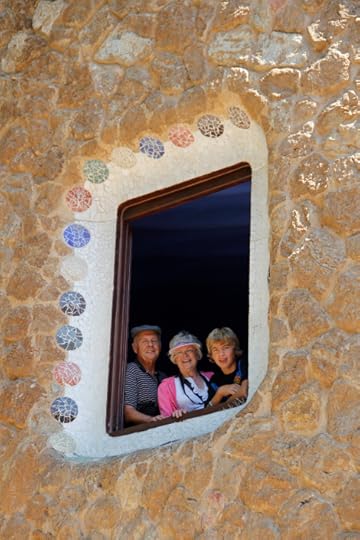 Visiting one of Gaudi’s Architectural Wonders in Barcelona.
Visiting one of Gaudi’s Architectural Wonders in Barcelona.
* * * * *
Finally, the big day arrived. By mastering the geography of the world, during the twelfth year of his life, Taylor had earned his personal dream Mediterranean cruise. But for us, the proverbial moment of truth had arrived. Connie and I now had a duly signed and witnessed power of attorney to be solely responsible for Taylor’s life during the two weeks he was with us. Such a responsibility is more than a little daunting. Much more so than having one’s grandson with us in the United States where most people speak English. For should he get lost in a foreign country, where the native language is not English, in great cities, often teeming with millions of people, and streets and byways our grandson has never seen before—what would we do? More frustrating yet, what would he do? What if some unscrupulous person should lure him away—and we’d never see him again? How could we ever have faced his parents with this perceived dereliction of our duty?
Since our son Greg, an advertising copywriter from Fort Lauderdale, would be with us, and would, from time to time, have Taylor alone with him, what if he’d be lost then?
That this is no light problem, let me share with you one of the scariest moments of the entire trip that took place at Barcelona’s Sagrada Familia. Millions of people live in Barcelona, and over 25,000,000 people from all over the world come here each year to see this almost mythical church [it’s not an operational cathedral] over a century in the making. It takes hours just to get inside its gates. Well, while inside, Greg and Taylor went shutterbugging in a different direction than Connie and I did. When I circled back and found Greg, Taylor was nowhere to be seen! Had this been San Francisco, Dallas or New York, I wouldn’t have been nearly as apprehensive. Initially, I assumed I’d find him quickly; when I failed to do so, each additional minute—each seeming like years!—that passed, my stress level skyrocketed. Here, there, inside the teeming edifice, I raced, then outside, but inside the gates, and everywhere masses of people—and no Taylor. I think I must have aged years during the mere minutes it took to find him, nonchalantly taking pictures. Oh the unutterable relief! And, at this juncture, the trip had not even started yet!
At the Monastery at Montserrat. 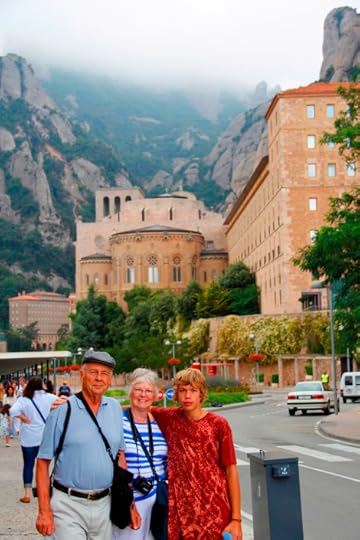
Later on, I thought of the parallel in Holy Writ, when twelve-year-old Jesus was lost in the great metropolis of Jerusalem—and his frantic parents searched three interminable days before finding him.
With that preamble, let me back up a couple of days.
ALMOST MISSING OUR PLANE
Up until this day of departure, we’d kept Greg’s joining us on the cruise a secret. Taylor had not even an inkling that his beloved uncle would be sharing the two weeks with us.
On July 27, we were scheduled to pick up Taylor in Annapolis, fly out of Baltimore to Philadelphia, where we’d change airlines and meet Greg at the gate of departure. That was the schedule; the reality proved far different! The reality was that not one, but two Baltimore to Philadelphia planes proved defective, thus placing our connecting flight to Spain in jeopardy.
We, along with some other travelers in a similar plight, were rushed to our already checked-in luggage, then rushed to a waiting van, then a veritable Jehu of a driver risked traffic tickets by racing down the freeway to the Philadelphia airport. Surreptitiously, Connie texted Greg so that he and the gate attendants could keep track of our whereabouts and likely (if no traffic slowdown) projected time of arrival. With bare minutes to spare, we reached the vast Philadelphia terminal and were propelled post-haste through security. We just made it! And the look of disbelief on Taylor’s face when he saw his Uncle Greg waiting for us in line was absolutely priceless! Worth every minute, week, and month of subterfuge it took to pull it off.
We were next crammed into an oversized US Air jet like so many tightly-packed sardines. Very little sleep for any of us during the long trans-Atlantic flight.
On July 28, we arrived in Barcelona, checked in at the Regina Hotel and, because we could not get in our rooms until afternoon, we took our pre-arranged bus trip to the mountaintop monastery of Montserrat. Believe me, when we returned from this jaunt, we found something to eat and we went to bed early, trying to catch up on the missing night’s sleep plus the missing eight hours on the clock.
Following is our itinerary:
July 30 – We board Royal Caribbean’s Brilliance of the Seas and sail out to sea.
July 31 – Nice, French Riviera, Monaco
August 1 – Livorno, Pisa, Florence
August 2 – Citaveccia and Rome
August 3 – Salerno, Pompeii, Amalfi Coast
August 4 – At Sea
August 5 , 6 – Venice
August 7 – Split (Croatia)
August 8 – Dubrovnik
August 9, 10 – At Sea
August 11 – We dock at Barcelona
August 12 – We board our plane and arrive in Philadelphia in the afternoon.
* * * * *
It is fascinating to see the world (in his journal entries) from the eyes of a thirteen-year-old!
July 30 – “We were caught in a huge storm. It thundered, hailed, and blew a couple of chairs off the boat. That was real cooooool! Then one of the staff let us inside or made us go inside.”
July 31 – “This morning we arrived at Nice. It was cool. We had to get up early though. Dang! We have to get up even earlier tomorrow. When we got to Nice we had to take a tender to shore. It was pretty cool but we didn’t sit up top which would have been even cooler.
“Our tour guide took us to a place called Eze! It was really cool, there was an amazing view and there was this castle, church, or whatever. I think it also could of been a house and a hotel. Maybe all of the above.
August 1 – “Today, we arrived at Florence. We went to Pisa and got a few pictures but the thing that sticks out the most was our guides. Especially Dilleetta! Aghaa! She didn’t tell us anything and she wouldn’t shut up. She would be like the sky is light blue which is a light blue but it isn’t quite blue, it’s kinda light or white but not quite. It’s a blue or a medium blue with white. But it’s not a dark blue white. Then it would be too dark blue. When we first got to Florence she took us to a leather shop for an HOUR. She said it was free time. G R R R R! . . . . We eventually go to Pisa and did all that and having Poppy running away.”
Visiting the Colosseum in Rome
My face is still red from that Pisa experience. I had drummed this message [to stay together at all times—and never to separate one’self from the group] again and again into everyone’s head—except, obviously, my own. At Pisa, inexcusably, I wandered off, taking pictures. Some time later, when they were getting extremely apprehensive—had I experienced a heart attack or stroke? —, we found each other. Boy, did I ever get a verbal thrashing! Taylor will probably chortle about the difference between Poppy’s talk and Poppy’s walk until the day he dies!
* * *
A little while after we returned, I asked Taylor if the cruise had made any difference in his life.
A far-away look came into his eyes, then he said, “The world seems so much bigger now.”
His parents tell us, “Ever since his cruise, it’s clear Taylor has been badly bitten by the travel bug.”
In retrospect, when asked to come up with his ten favorite places or experiences, in order of preference, this is what he wrote:
1. The Amalfi Coast [he was overwhelmed by the corkscrew road leading down through mist to the incredibly deep blue sea below].
2. Venice.
3. Monaco [he especially reveled in seeing the exotic Lamborghinis, Bugattis, Rolls Royces, Bentleys, etc.].
4. Eze. [An ancient hilltop village in France].
5. Strawberry virgin daiquiris [his favorite pool-side liquid extravagance].
6. Soft-serve ice -cream machine [no small thanks to near constant visits to it, he gained over five pounds during the cruise].
7. La Sagrada Familia in Barcelona.
8. Food! All the different food at all the different stops.
9. The storm [as we were leaving Barcelona and heading out to sea, a terrific Mediterranean storm blew out of nowhere, blowing deck chairs, people, and everything not nailed down, hither and thither. Taylor enjoyed most the sheer violence of it; got out in the open so he could take the full brunt of it. The authorities were not amused; they unceremoniously pushed him back under cover].
10. Dubrovnik
Next week, we’ll break from Grandparenting in order to get to Dr. Joe’s Book of the Month October selection. We’ll get back to Seth’s 2014 story on November 5.
Photos by Greg Wheeler.


October 15, 2014
Making memories with Grandchildren – Part 2 – Master the Geography of the World Before You are 13
BLOG #42, SERIES #5
WEDNESDAYS WITH DR. JOE
MAKING MEMORIES WITH GRANDCHILDREN
PART TWO
MASTER THE GEOGRAPHY OF THE WORLD
BEFORE YOU ARE THIRTEEN
October 15, 2014
The years flowed swiftly by, as years have a way of doing. I married Connie, the golden-haired love of my life; over time, we were blessed with two children: Greg and Michelle. Michelle grew up and married Duane Culmore. Two sons were born to them: Taylor and Seth (three years apart).
In today’s society, all too few intergenerational families live close to each other. Sadly, the same is true with us: our grandchildren are half a continent away from us. So we see them all too seldom. But there are no easy answers for what to do about it. In our case, Connie’s folks moved half way across the country to live near us, in Texas. Some years later, we moved away and left them there. One has to go where the jobs are.
So how could we spend quality time alone with our grandsons? Some years ago an idea came to me, born of Grandpa Leininger’s love of National Geographic maps and from my own fascination with geography and travel. We shared it with Michelle and Duane first, then with Taylor and Seth while they were still young.
Here is how we phrased it: “If you master the geography of the world before your thirteenth birthday, Poppy and Grammy will take you anywhere in the world you’d like to go.”
Well, the years rolled along and Taylor reached eleven. No apparent interest in the challenge. We began to breathe easier: there would not be big-time draining of our bank account after all. About a year later, just before Taylor’s twelfth birthday, our daughter Michelle phoned us with the news that Taylor was seriously interested in holding us to our promise. “So, Dad, how will it work? What are the requirements? We’ve only twelve months left, and Taylor will have to fit it in against school, sports, music, etc.”
I told her he’d have to know all the countries of the world, capital cities, major cities, mountain ranges, major rivers and lakes, deserts, and islands; also oceans, seas, bays, gulfs—and any unusual geographic features. She would have to be the hands-on instructor and pre-tester; only when he was ready with a country or region would Taylor phone me and the three of us would test him on it together.
And so it began. At first we waited until he’d mastered entire regions; but that proved too difficult to retain in his head, so gradually we reduced the testing areas to a more humane level. Because of his many other involvements, and Michelle’s and mine, it proved to be a long, slow process. Michelle became the taskmaster on that end. The U.S. and Canada (states and provinces too) proved relatively easy since Taylor already knew a lot about them. But after that, it got harder. Harder yet when we tackled European, Asian, and African areas of the world.
Once in a while Taylor would pleasantly surprise me: learning more about a country or region than I required of him. Michelle and Duane reported in to us that Taylor had already experienced a serendipity: when his history teacher referred to a certain Latin American country, Taylor was the only one who knew where it was. More and more, during class discussions, Taylor’s would be the lone-hand raised.
Another problem now surfaced: If Taylor didn’t master the geography of the entire world before his thirteenth birthday, he’d forfeit the promised reward. However, in order to get good booking rates, we couldn’t afford to wait. Yet another problem came in tandem: If he didn’t yet know the world, how could he then choose where he most wanted to go? We finally concluded that we’d need to rephrase the original question so it now read: “Where are three places in the world you’d like to see?” and we would select one of them and book it. Which resulted in yet another problem: Because of Taylor’s busy summer sports program, the available time-frame before school re-started provided us with only a small window of time.
One of his possible choices had to do with the South Pacific, but the time frame and distance to get there and back precluded our booking a destination there. Another two choices: central Italy and Venice worked better. So we booked a 12-day Mediterranean cruise that would feature both locales. But we didn’t tell Taylor because until and if he completed the challenge, we could still cancel the booking. To take him on the cruise without his completing the task would be a travesty and set a terrible life-precedent for him.
Meanwhile the remaining time interval was shrinking alarmingly and his progress towards his goal proved erratic. Our daughter knew she could push him only so far and so fast.
And something totally unexpected had come up: our son Greg had decided he wanted to go along! Many years earlier, when he was about Taylor’s age, I had mandated that he master the world’s geography, promising only to give him a nice reward when he finished. Well, he did complete it, and his munificent reward was only a train trip from Fort Worth to Cleburne, Texas—all of forty miles! Unbeknownst to us, Greg had been sulking about this ever since—and to add insult to injury, here we were promising a European cruise to his nephew for the same task! So, we now added Greg to our already full room in our cruise booking. But we didn’t tell Taylor for Greg wanted it to be a surprise. Naturally, we had to keep Michelle and Duane up to date—and that was tough given all the secrets involved.
The last month came, then three weeks, two weeks, and then there was only one week left—and still Taylor was not done. Needless to say, there was a lot of tension for all of us. Finally, only hours away from his birthday—Taylor tested out on the last piece in the jigsaw-puzzle of the world.
At last, we could send him a journal for him to write in during the cruise which we could now detail for him.
* * * * *
Next week: Taylor’s reward.


October 8, 2014
Making Memories with Grandchildren – Part 1 – A Grandfather Who Never Got Old
BLOG #41, SERIES #5
WEDNESDAYS WITH DR. JOE
MAKING MEMORIES WITH GRANDCHILDREN
PART ONE
A GRANDFATHER WHO NEVER GOT OLD
October 8, 2014
Many years ago, I was privileged to spend my eighth-grade year with my maternal grandparents in Arcata, California. That one year proved to be pivotal in my own life journey. Pivotal because my grandfather, Herbert Norton Leininger, was a Renaissance man whose passion was truly global: encompassing everything that was going on in the world. Tacked to the walls of the entire second-floor living areas were National Geographic maps, so that Grandpa could keep track of everything that was happening in the world, and the people who made them happen.
Never can I forget Leininger Christmases, when all six daughters and their husbands and families, one by one, arrived and gradually overflowed the big rambling three-story home. Once assigned quarters, everyone gravitated to the second floor where the action was. We kids were tremendously impressed by how little time it took for Grandpa to subjugate these authority figures, our fathers. Grandpa gave hem no time in which to claim any turf for themselves, but instantaneously dominated his second-story stage, vigorously showing his cowed sons-in-law where world events were taking place, lashing out at world leaders who failed to live up to Grandpa’s high and rigid expectations, and occasionally praising the few who passed muster. All the while like a stage actor, he’d vigorously stride back and forth from map to map.
Periodically, Grandpa, with an impish look in his eyes, would glance around to see if those guardians of our morals—his daughters—were listening, then launch into the opening lines of what many in that semi-Victorian Age considered rather “naughty”: Rudyard Kipling’s “And I Learned About Women from Her.” At least that’s what we kids thought it was called, because of that recurring line in each stanza.. It wasn’t until years later that I discovered the poem is simply titled The Ladies.” In it, the persona, obviously—to our mothers at least—a womanizer in then British-run India and Burma. The opening lines run thus:
“I’ve taken my fun where I’ve found it;
I’ve rogued an I’ve ranged in my time;
I’ve ‘ad my pickin’ of sweethearts,
An’ four o’ the lot was prime.
One was an ‘arf-caste widow,
One was a woman at Prome,
One was the wife of a jemadan-sais [head-groom]
An’ one is a girl at ‘ome.”
In essence, in this poem, Grandpa was teaching his grandchildren about the birds and the bees—specifically this fascinating creature we call “woman.” Each stanza having to do with a specific woman the persona in the poem had learned from. But long before Grandpa reached concluding stanzas such as this:
“I’ve taken my fun where I’ve found it,
An’ now I must pay for my fun,
For the more you ‘ave known o’ the others
The less you will settle to one;
An’ the end of it’s sittin’ and thinkin’,
An’ dreamin’ Hell-fires to see;
So be warned by my lot (which I know you will not),
An’ learn about women from me!”
Yes, long before his daughters had vainly attempted to quench the orator, we kids—perhaps because our mothers were so upset with their father—were inwardly enthralled that we’d been permitted to listen to such a wicked poem. Not that we understood why it was supposedly wicked: it was enough that our mothers thought it was.
Grandma Josephine, who’d long ago learned that when the Lord of the Manor was on a roll, he never stopped for breath (for, perish the though, that momentary pause might enable one of his squirming sons-in-law to launch a contrary opinion), consequently, Grandma immediately took the stage in a much quieter manner) with her daughters, discussing family personalities, foibles, idiosyncracies, etc., and the daughters giving as much as they took, there was much laughter.
We kids sat enthralled on the floor taking in both tracks. The experience reminds me of certain contemporary TV interviewers who continually interrupt their interviewees who attempt to answer their hosts’ questions; and when these interviewees interrupt other discussion participants—all these individuals talking at once—, the hubbub is indescribable. In retrospect, I’m convinced that those holiday gatherings were one-of-a-kind. The age of large cohesive families, print-driven education, patriarchal family structure, and children-are-to-be-seen-and-not-heard [we were the last such generation], is no more—and will never come again.
Then, one by one, each car-load would disappear to much hugging, kissing, and waving, each one leaving the house lonelier. And, before long, it would be just us left. Early next morning, religiously at six o’clock, I’d hear the sonorous radio voice of Gabriel Heater (with a fair amount of static) downstairs, and know that Grandpa was once again setting his inner sails for the day.
Only in retrospect do I realize the impact of that one year with my maternal grandparents. How Grandpa’s persona seeped into my own goals and philosophy of life. Nor can I forget Grandpa’s late-life soaring. When he reached the age of 75, he announced that for 50 years he’d pleased the world and his wife—now he was going to please himself. He purchased a snazzy Lincoln hardtop, grew a goatee, and, with the help of a fellow conspirator we knew only as Mr. Smith, he constructed the first camper I ever remember seeing: such a long body grafted on to a Studebaker truck that it was a miracle the front wheels didn’t lift off the ground! Grandpa then found enough bargain paint—the most hideously ugly shade of pea-green I’ve ever seen—to complete the job; loaded it with supplies and grub, and headed north. Only when they reached the last road separating them from the North Pole did they turn around.
When they returned, they didn’t stay long, but headed south into the jungles of Mexico.
But even that wasn’t enough: Grandpa next announced that he was going to explore all of California’s western rivers from their headwaters to the sea. Never can I forget one of those expeditions: the day I joined family members waiting for Grandpa’s outboard-driven rubber raft to round the bend; sometime later that day, here he came; veered in to shore, bequeathed his garbage to us, noblesse obligedly accepted our grocery contributions, restarted the outboard, and he was once again heading down-river. A jaunty last wave—and he disappeared from sight.
Nor can I forget the times he regaled us with Shakespeare—especially Hamlet, which he knew by heart. He was Prince Hamlet when he treaded the attic boards of his house.
His was the only funeral I can remember where all the “mourners” could do was laugh. In my eulogy, I did my best to recreate his unique persona.
* * * * *
Next week I’ll continue this series of blogs about this thing called grandparenting.


October 1, 2014
HAS AMERICA REACHED ITS TIPPING POINT?
BLOG #40, SERIES #5
WEDNESDAYS WITH DR. JOE
HAS AMERICA REACHED ITS TIPPING POINT?
October 1, 2014
Unbelievable that we could even be discussing such a thing, but recent events in Colorado are serving as not only a state-wide but national groundswell of concern on the issue. Might it be that we as a people have become so complacent about our 225-year-old democracy that we have missed the ominous cracks that are only now being taken seriously?
In history, rare is the great nation that remains great long-term. We, as a people, however, have blithely assumed we’re an exception to the rule in that respect.
IS COLORADO A WAKE-UP CALL?
This is a question many people across the nation are beginning to ponder. Since we locals are in the eye of the storm, so to speak, we tend to take for granted that most Americans are aware of the raging debate over Colorado’s Jefferson County School Board. Permit me to fill you in on the story:
An unusual situation developed during the last six months when three of five board member positions became open at the same time. Since many local citizens felt strongly that they had little voice in how the district was being run, three centrist locals decided to run for those seats. In spite of being greatly outspent media-wise by union supporters, all three were swept in, giving them a three-fifths majority.
What disturbs so many people is what followed: The media regularly categorizes the three new board members as “Christian extremists,” and passes up no opportunity to disparage or discredit them. The teachers’ union orders district teachers to storm the board meetings, along with union operatives from all over. Without defenders, these board members tremble as hecklers turn their deliberations into virtual lions’ dens. One of the new board member’s own children has been so viciously harassed that the parents were forced to pull the child out of a local school and transfer to a charter school some distance away. Teachers have so openly maligned and discredited these board members that many of the 85,000 students in this large district are now seething with hatred against them. So much so that these board members dare not even step foot in any of the classrooms they are legally in charge of.
At first, the storm of media negativity was general: in essence, trying to make life such hell for the new board members that at least one of them would resign. And daily life for each of the three has become just that. “Daily discouragement” a mild term for how they feel from day to day—and unpaid positions at that!
They were first attacked for hiring a new district superintendent [the original one resigned rather than work with the new board members] who was empathetic to the desire of ordinary citizens to have a say in the running of the district.
They were next attacked for their attempts to tie pay-increases to excellence in teaching. The two original board members voted against it. The union unleashed a storm of outrage that the poorest-performing teachers wouldn’t get the same salary increases the best-performing teachers would.
Then there is the latest storm of outrage over the board decision that some form of positive patriotism in the teaching of U.S. history be encouraged. Deconstructionists raged: How dare they encourage patriotism when so many terrible things have been done in the past!
During the last week, teachers have been disrupting family-life by staging sick-ins; by not showing up for classes, parents are forced to stay home with their kids.
Well-founded rumor now has it that as soon as the fall election is over, a massive recall of the three new board members will be organized and funded.
All this is making many people, not only in Colorado but across the country, wonder what has happened to our nation that such things can be? That such tactics of intimidation and poisoning the well against an opponent can be condoned. Indeed, locally and nationally, Republican candidates are blistered in a media frenzy of attack ads for their right-to-life stances (which is in essence an attack on all American Christians who believe in the sanctity of life).
Woven through all this is a nation-wide tide of ridicule and scorn directed at all conservatives, Christians, and people who still dare to defend traditional marriage and family. One of the new board members’ cars had a Defense of Family bumper sticker depicting stick-figures of a man, woman, two children, and a dog defaced during the last week: defaced by the addition of a painted-on meteor on collision course with the family.
I’m in a personal quandary here because I have wonderful relationships with area teachers and administrators in five area elementary schools, where I’ve worked in tandem with them for eleven years now, as we together try our best to get more elementary students into reading. There are so many individual teachers who continue giving their all each day.
Reflecting national concern over one aspect of this controversy is a September 27-8, 2014 Wall Street Journal major opinion essay titled “Democracy Requires a Patriotic Education” by Donald Kagan (Yale University historian and professor emeritus), in which he weighs in on the issue in observations such as these:
“Our schools have retreated from the idea of moral education, except for some attempts of what is called ‘Values Clarification,’ which is generally a cloak for moral relativism verging on nihilism of the sort that asserts that whatever feels good is good.”
“Just as an individual must have an appropriate love of himself if he is to perform well, an appropriate love of family if he and it are to prosper, so, too, must he love his country if it is to survive.”
“Neither family nor nation can flourish without love, support, and defense.”
“Assaults on patriotism are failures of character. They are made by privileged people who enjoy the full benefits offered by the country they deride and detest, but they lack the basic decency to pay it the allegiance and respect that honor demands. But honor, of course, is also an object of their derision.”
“The encouragement of patriotism is no longer a part of our public educational system, and the cost of that omission has made itself felt. This would have alarmed and dismayed the founders of our country.”
“The story of this country’s vision of a free, democratic republic and of its struggles to achieve it need not fear the most thorough examination and can proudly stand comparison with that of any other land.”
* * * * *
So, my question is this: What can each of us do to help avert further cracks in the foundational structure of our republic? Is our current culture of disparaging, discrediting, and ridiculing conservatives, Christians, right-to-lifers, defenders of traditional marriage, and defenders of traditional family, irreversible? If it is not, what can each of us do to help fix it?


Joe L. Wheeler's Blog
- Joe L. Wheeler's profile
- 36 followers


